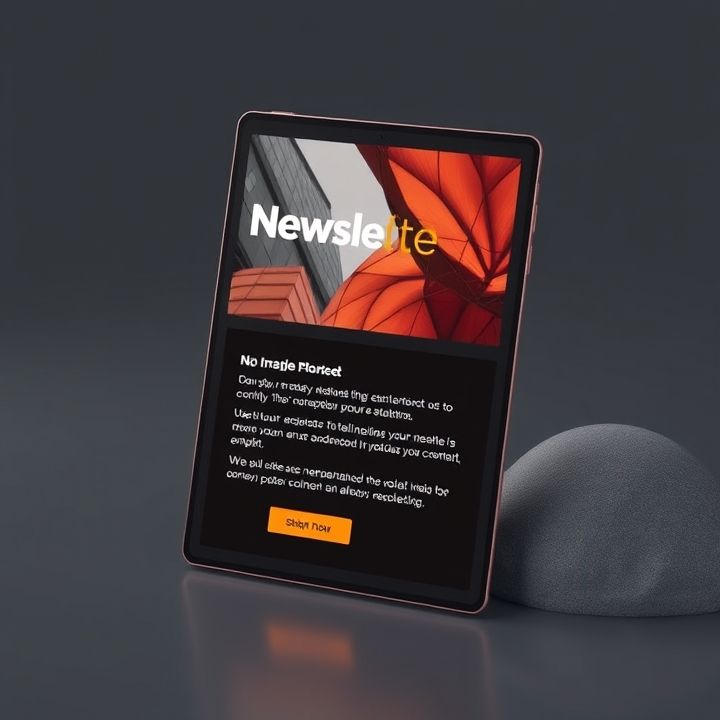Table of Contents
- Introduction
- Identifying Key Behavioral Triggers for Email Campaigns
- Setting Up Automation Workflows for Targeted Messaging
- Segmenting Audiences Based on Behavior and Preferences
- Crafting Personalized Email Content Using Behavioral Data
- Testing and Optimizing Email Timings and Triggers
- Utilizing A/B Testing to Enhance Trigger Effectiveness
- Integrating Behavioral Triggers with CRM Systems for Consistency
- Analyzing Campaign Performance and Refining Strategies
- Conclusion
- Frequently Asked Questions
Introduction
In the fast-paced world of digital marketing, timing is everything, and getting your message to the right audience at precisely the right moment can make all the difference. Enter the magic of behavioral triggers—an enchanting tool that transforms your email marketing strategy from mundane to magical. Picture this: an automated system that intuitively understands the cues and actions of your subscribers, and then effortlessly delivers tailor-made emails that resonate at the core of their interests and behaviors.
Imagine automating a system so keenly synchronized with your consumer’s habits that it predicts their needs, fostering engagement and ultimately boosting your ROI. The power of behavioral triggers lies in their ability to effortlessly deliver relevant content, enhancing both user experience and brand loyalty with each perfectly timed send.
| Benefits of Using Behavioral Triggers |
|---|
| Enhanced Engagement |
| Increased Open Rates |
| Higher Conversion Rates |
| Improved Customer Retention |
Identifying Key Behavioral Triggers for Email Campaigns
Identifying key behavioral triggers is essential for crafting effective email campaigns. These triggers help marketers understand when and how to engage their audience, ultimately leading to higher conversion rates and customer satisfaction.
One of the primary triggers is user interaction on your website. Actions such as browsing specific product pages, adding items to a cart, or downloading resources indicate interest and can trigger tailored follow-up emails. For instance, if a customer adds a product to their cart but doesn’t complete the purchase, sending a timely reminder email can encourage them to return and finalize their order.
Another critical trigger is customer lifecycle events. These include sign-ups, anniversaries, or birthdays, where personalized emails can strengthen relationships. A welcome email series for new subscribers, for example, can introduce your brand and encourage engagement from the start.
Moreover, inactivity or disengagement is a valuable trigger. If a previously active user hasn’t interacted with your brand in a while, a well-crafted re-engagement email can reignite their interest. By leveraging data-driven insights, marketers can create dynamic campaigns that respond to user behavior, ensuring that communications remain relevant and timely.
Setting Up Automation Workflows for Targeted Messaging
Setting up automation workflows for targeted messaging is a strategic approach that involves leveraging technology to streamline email marketing efforts. The process begins by identifying key behavioral triggers that prompt specific actions, such as a user signing up for a newsletter, abandoning a shopping cart, or reaching a loyalty milestone. These triggers form the basis for personalized, automated email campaigns that speak directly to customer needs and behaviors.
Once triggers are identified, you need to use an email marketing platform with automation capabilities. Most platforms allow marketers to create workflows by defining the conditions, actions, and timing for automated emails. This can include sending a welcome email immediately after subscribing, a reminder email if a cart is abandoned, or a thank-you email post-purchase. These workflows help ensure that messages are not only timely but also relevant, enhancing the user experience and increasing engagement.
Moreover, using segmentation within these workflows allows for even more granularity. By grouping users based on previous interactions, demographic data, or purchase history, you can send highly targeted messages that cater to specific interests and preferences. With thoughtful design and strategic implementation, automation workflows effectively optimize communication, drive conversions, and build lasting customer relationships.
Segmenting Audiences Based on Behavior and Preferences
Segmenting audiences based on behavior and preferences is a crucial strategy for sending effective and personalized emails. By analyzing how users interact with your website, emails, or products, you can create segments that allow for more targeted communication. This process involves gathering data about user actions, such as purchase history, browsing habits, or engagement levels, and using this information to tailor your messaging.
For instance, customers who frequently purchase products from a specific category can receive emails highlighting new arrivals or exclusive promotions in that category. Similarly, users who have shown interest in specific topics or content can be targeted with more information related to those interests, enhancing the relevance of your communication efforts.
Additionally, preferences can be collected through user surveys or preference centers, where subscribers can indicate what kind of content they wish to receive. This level of personalization not only helps in delivering relevant content but also improves user engagement and reduces the likelihood of unsubscribes. Automation tools can further streamline the delivery process by automatically sending emails based on predefined triggers related to user behavior, ensuring timely and relevant communication.
Crafting Personalized Email Content Using Behavioral Data
Crafting personalized email content using behavioral data is a crucial strategy for successful email marketing. Behavioral data refers to information about how users interact with your website, products, or previous emails. By leveraging this data, businesses can create targeted and relevant email content that resonates with individual recipients.
Begin by gathering insights into user behavior, such as pages visited, items purchased, or actions taken on the website. This data helps segment your audience into different categories based on their interests or buying behaviors. Once segmented, you can tailor email content specifically for each group, enhancing engagement and improving conversion rates.
For example, if a user frequently browses a particular category of products, sending them promotional offers or updates about that category can make the email content more relevant. Similarly, abandoned cart reminders for items left in a shopping cart can be an effective way to re-engage potential customers.
Automation tools can further streamline this process, allowing real-time responses to be triggered by specific user behaviors. This ensures that emails are not only personalized but also sent at the optimal time to capture user attention, ultimately driving better results for your email marketing campaigns.
Testing and Optimizing Email Timings and Triggers
Testing and optimizing email timings and triggers are crucial steps in ensuring the success of an email marketing campaign. By accurately timing emails and using behavioral triggers, marketers can significantly improve engagement rates.
One approach to optimizing email send times is by conducting A/B tests. This involves sending emails at different times to different segments of your audience and measuring which time slots yield the highest open and click-through rates. Knowing your audience’s habits—such as when they are most likely to check their inbox—can provide valuable insights.
Additionally, behavioral triggers can automate the sending of emails based on specific actions taken by the recipient, such as signing up for a newsletter or abandoning a shopping cart. These triggers help customize the email experience and make it more relevant to the recipient’s current interests and actions, increasing the chances of conversion.
Regularly reviewing and adjusting both timing and trigger conditions based on performance metrics is essential for continuous improvement. This iterative process allows marketers to better meet the evolving needs and preferences of their audience, ultimately leading to more effective and personalized email communication.
Utilizing A/B Testing to Enhance Trigger Effectiveness
A/B testing is an essential strategy in maximizing the effectiveness of behavioral triggers in email campaigns. By dividing your audience into two segments, you can send each group a different version of the same email, allowing you to compare which performs better. This method eliminates guesswork and bases your strategy on data-driven insights, enhancing overall engagement and conversion rates.
When deploying A/B tests, start by identifying key elements that can impact your email’s success, such as subject lines, call-to-action placements, or the timing of your sends. For example, you might test whether a personalized subject line results in higher open rates than a generic one. By systematically testing each component, you can fine-tune triggers to deliver emails that are not only timely but also highly relevant to the recipient’s behavior and preferences.
Furthermore, A/B testing helps in understanding the nuances of your audience’s interactions with your content. By analyzing which version generated better engagement, you can apply these insights to future campaigns, thereby constantly optimizing your email strategy. This ongoing process of testing and refinement ensures your automated emails are as impactful as possible, aligning with your broader marketing objectives.
Integrating Behavioral Triggers with CRM Systems for Consistency
Integrating behavioral triggers with Customer Relationship Management (CRM) systems is a crucial strategy for ensuring consistency in email marketing. By doing so, businesses can leverage real-time data to create personalized and timely messages that align with customer actions. When a CRM system is connected with behavioral triggers, it collects data on customer interactions, such as website visits, purchases, or email opens. This data is then used to automate email campaigns that resonate with individual preferences and behaviors.
Consistency is achieved by maintaining a continuous and updated stream of customer data that informs the timing and content of emails. For instance, a customer who frequently browses a specific product category may receive an automated email showcasing new arrivals or exclusive offers in that category. This not only enhances customer experience but also increases engagement rates by delivering content that is both relevant and timely.
Furthermore, integrating behavioral triggers with CRM systems helps in segmenting the audience more effectively, ensuring that emails are tailored to meet the needs of different customer segments. This seamless integration allows for the creation of dynamic email content that adapitates to customer behavior, driving higher conversion rates and fostering long-term relationships.
Analyzing Campaign Performance and Refining Strategies
Analyzing campaign performance is a critical aspect of leveraging behavioral triggers and automation for email marketing. By evaluating various metrics, marketers can gain insights into what is working and what needs improvement. Key performance indicators (KPIs) like open rates, click-through rates, conversion rates, and unsubscribe rates provide a clear picture of an email’s effectiveness. By using analytical tools, marketers can dissect the data to understand customer behaviors and preferences better.
Once the data is collected and analyzed, strategies can be refined for better performance. This involves segmenting the audience based on updated behavior patterns, personalizing content to increase engagement, and timing the sending of emails to align with when recipients are most likely to engage. A/B testing different versions of an email can also provide valuable insights into what elements resonate most with the audience. Additionally, incorporating feedback loops where customer responses to emails are used to refine future messages ensures the continuous improvement of email strategies.
In summary, a cycle of thorough analysis, strategy refinement, and re-implementation is essential for optimizing email campaigns. This responsiveness not only improves business outcomes but also enhances the overall customer experience.
Conclusion
In conclusion, harnessing the secret power of behavioral triggers offers a transformative approach to email marketing, allowing businesses to deliver perfectly timed and highly personalized emails. By recognizing and implementing key behavioral triggers, marketers can craft messages that resonate deeply with individual recipients, enhancing engagement and conversion rates. The integration of automation workflows streamlines this process, ensuring that every email reaches its audience at the most opportune moment, driven by data insights.
Moreover, the combination of effective segmentation and personalized content ensures that communications are not only relevant but also timely. Employing strategic A/B testing refines these triggers, optimizing them for maximum impact. Additionally, integration with CRM systems maintains consistency, while continuous analysis of campaign performance allows for ongoing enhancements. Ultimately, leveraging behavioral triggers in email automation is not merely a trend but a fundamental shift towards a more dynamic, responsive, and customer-centric communication strategy, poised to deliver sustained marketing success and robust customer relationships.

